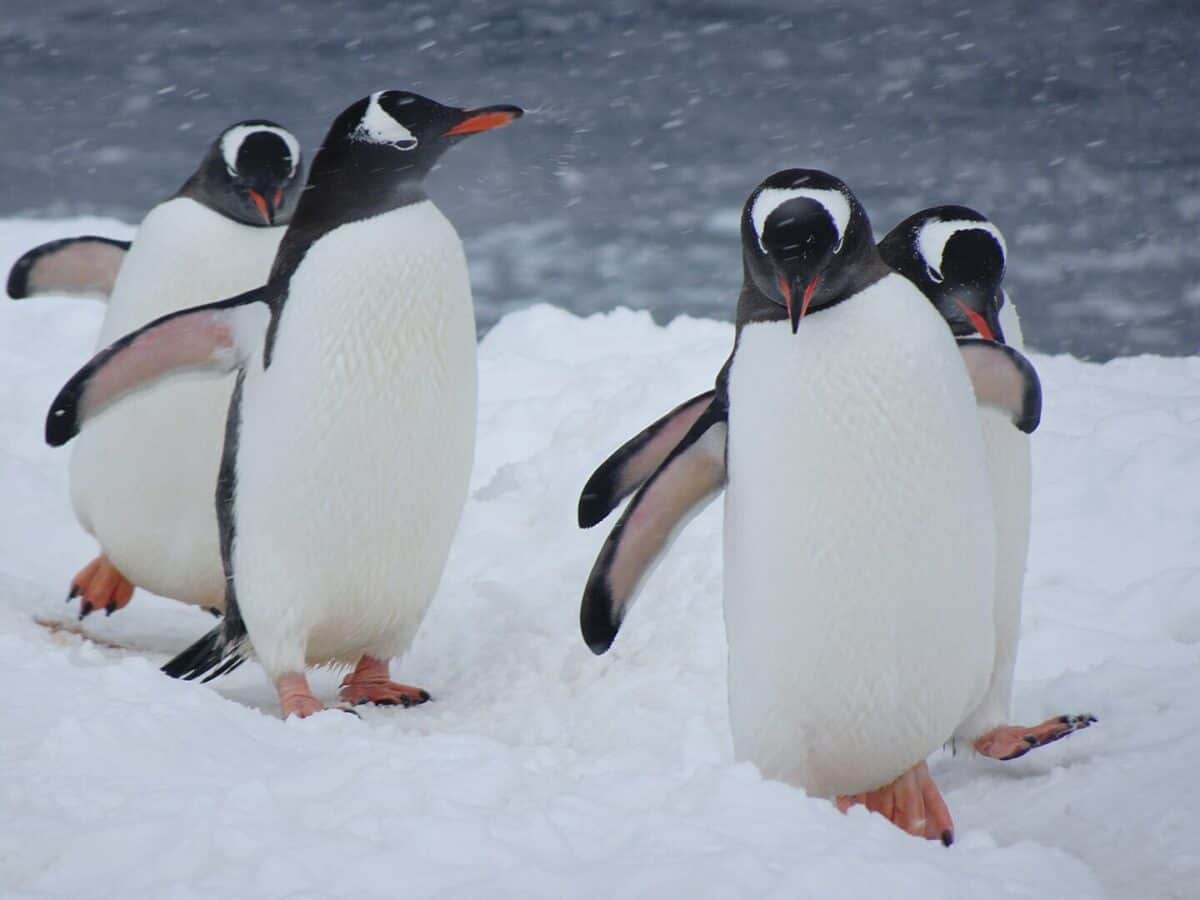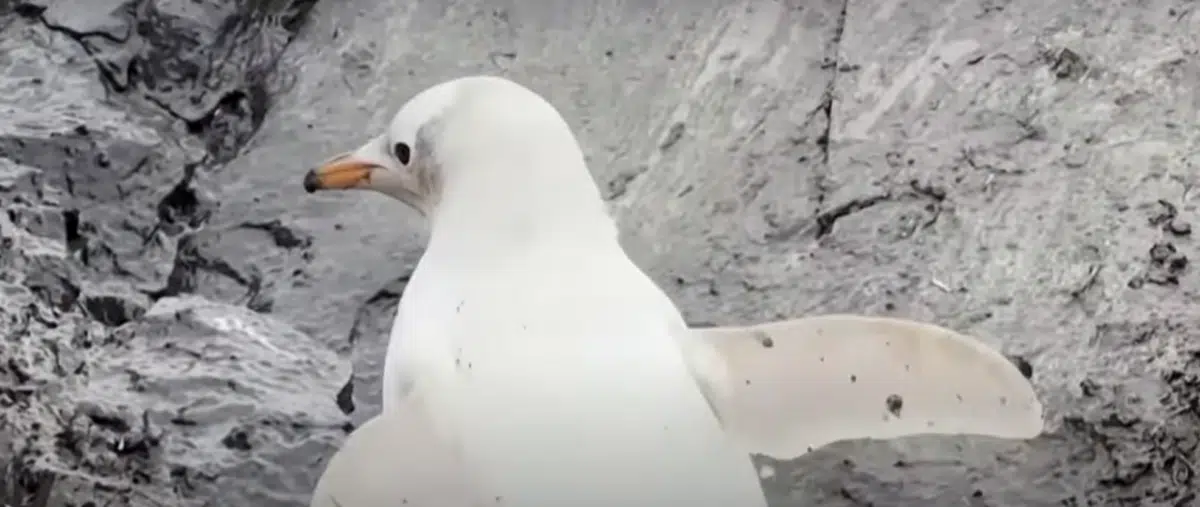A rare sighting of a white penguin in Antarctica has stirred excitement and curiosity among scientists and wildlife enthusiasts alike. This exceptional discovery was made at a scientific research base on the icy continent, where the unique bird was spotted among its black and white counterparts.
Understanding Leucism: The Science Behind the White Penguin
The white penguin, identified as a leucistic individual, exhibits a condition known as leucism. This genetic anomaly causes a partial loss of pigmentation in an animal’s feathers, resulting in white, pale, or patchy coloration. Unlike albinism, which is characterized by a complete lack of melanin and results in red or pink eyes, leucistic animals have normal eye color. In the case of this penguin, its eyes were observed to be of the usual dark color, confirming its leucism.
Ecological Significance and Survival Challenges

This remarkable find in Antarctica is particularly noteworthy due to the rarity of such occurrences in the wild. Penguins, known for their distinctive black and white plumage, rely on this coloration for camouflage and survival. The white penguin’s unusual appearance could potentially make it more visible to predators and less successful in hunting, as it lacks the typical counter-shading that penguins use to blend in with their surroundings.
Research and Monitoring: Insights from the Antarctic Base

The discovery was made by a team of researchers who were conducting a study on the penguin colonies near the base. Initially, the white penguin was thought to be a different species, but further observation and analysis confirmed it as a leucistic variant of the local species. The researchers have been monitoring the bird to study its interaction with the colony and its survival tactics given its unique appearance.
Implications for Wildlife Diversity and Climate Change
The presence of a white penguin in Antarctica opens up new avenues for research and understanding of genetic diversity within wildlife populations in extreme environments. It also raises questions about the impacts of climate change and environmental stressors on genetic mutations in wild populations. Researchers are keen to understand whether such anomalies are becoming more common and what this might mean for the future of these species.
Captivating the Public Imagination: The Symbolism of the White Penguin
This rare sighting has not only provided an exciting opportunity for scientific research but has also captured the imagination of the public. The white penguin has become a symbol of the unique and diverse life forms that inhabit our planet and a reminder of the wonders that still exist in the most remote corners of the world.
Conclusion: A Call to Protect Biodiversity and Ecosystems
In conclusion, the discovery of the white penguin in Antarctica is a significant event for the scientific community and wildlife enthusiasts. It underscores the importance of ongoing research and conservation efforts in these fragile ecosystems. As climate change continues to impact wildlife habitats, understanding and preserving the genetic diversity of species like penguins becomes increasingly crucial. This rare white penguin serves as a beacon of the extraordinary biodiversity that our planet harbors, and a call to action to protect these incredible creatures and their habitats for future generations.
Up next:
Photographer Captures Touching Scene of Two Widowed Penguins Admiring Melbourne’s Skyline
BBC Breaks Rules To Rescue Helpless Penguins
Pet Penguin Loves Shopping For Fresh Fish
Join our Forum for free today!

- The Kleptomaniac Cat That Rules Houston - July 20, 2024
- Elephant Makes a Lifelong Friend at Sanctuary in Tennessee - July 14, 2024
- Evidence For World’s Oldest Fossilized Forest Discovered in New York - July 11, 2024

